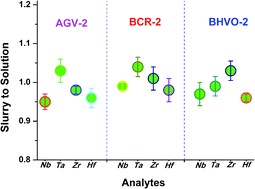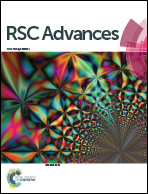Slurry nebulisation ICP-MS direct determination of high field strength elements (Nb, Ta, Zr, and Hf) in silicate rocks
Abstract
A simple, rapid, and reliable method was developed for the direct determination of four high field strength elements (HFSEs, namely, Nb, Ta, Zr, and Hf) in refractory silicate rocks using slurry nebulisation inductively coupled plasma mass spectrometry (ICP-MS). Samples were dispersed in a 0.2% Triton X-100 solution by wet-grinding with a tissue cell-destroyer, and 90% of the particles in the slurry were found to be less than 1.5 μm in diameter during 90 s of milling. Fine slurry was directly introduced into ICP and detected by mass spectrometry. The behaviors of different particle size distributions in the transportation and ionisation processes were investigated. Results indicated that the cut-off size for particle efficient transport (in the sample introduction system) and complete ionization (in the ICP) was approximately 8 μm and 4 μm, respectively. Our fine slurries (mean particle size, <1.0 μm) showed comparable mass transfer efficiency and ionisation efficiency to aqueous standards. Calibration can be carried out via aqueous standards, with a limit of quantification (LOQ) in the range of 18–30 ng g−1. Satisfactory accuracy (recovery, 91 to 103%) and precision (RSD, 0.9 to 6.3%) were verified by analysis of a series of silicate rock certified reference materials (CRMs).



 Please wait while we load your content...
Please wait while we load your content...